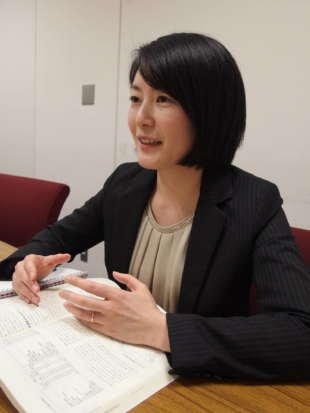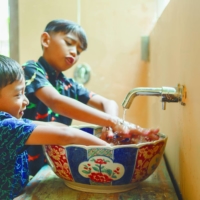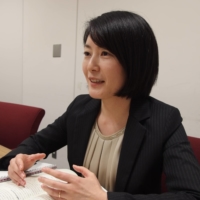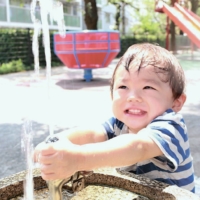In 2010, the United Nations General Assembly recognized access to safe and clean drinking water and sanitation as a human right, and called for international efforts to help countries provide safe, clean, accessible and affordable drinking water and sanitation.
In 2015, the U.N. General Assembly established the sustainable development goals (SDGs), a collection of 17 interlinked global goals designed to be a “blueprint to achieve a better and more sustainable future for all.” At the time, 193 countries reaffirmed their commitment to the human right to water and sanitation with the official wording of SDG 6: “Ensure availability and sustainable management of water and sanitation for all.”
However, despite some progress, the U.N. reports that 2.2 billion people still had no access to safely managed drinking water, and 4.2 billion people were living without safely managed sanitation in developing countries as of 2017.
As global water issues are becoming increasingly serious, countries that face challenges are rushing to build water infrastructure.

“Japan’s water industry has addressed the global water challenges using advanced technologies for chemicals, filters, machines and equipment, reverse penetration membranes and plant engineering,” said Sawaka Takazaki, director for project coordination at the Office for Promotion of International Project(s), Infrastructure System(s) and Water Industry at the Ministry of Economy, Trade and Industry.
In March, METI released a report that reviewed the policies supporting the overseas activities of Japan’s water industry for the past 10 years to establish a future direction toward further expansion.
The global market for the water industry (excluding Japan) expanded from ¥49.7 trillion in 2010 to ¥71.9 trillion in 2019. METI estimates the market will reach ¥84.4 trillion in 2025 and surpass ¥110 trillion in 2030.
Besides population growth, which has had a fundamental impact on the global water balance, urbanization and industrialization in emerging countries, as well as outdated water infrastructure in developed countries, have contributed to market expansion.
“In addition to technological strength, we regard expertise, including on-time delivery and steady service on a long-term basis, as Japanese assets,” Takazaki said. “The Japanese business style that encompasses cultivation of local human resources and long-term scheduled, efficient service while transferring technology and operations will eventually contribute to achieving the SDGs.”
However, according to a survey by METI, 73 Japanese companies involved in the water industry generated overseas sales of ¥347 billion in 2019, which accounted for only 0.48% of the ¥71.9 trillion overseas market.
“From this survey, we can only learn the sales of the companies that responded to the questionnaire, but it is true that the Japanese water industry has a very low share of the overseas market,” Takazaki admitted. “However, overseas sales have been increasing for the past 10 years, nearly doubling from ¥176 billion in 2010. On a positive note, there is room to grow for the Japanese water industry.”
The term water industry covers many fields, such as supply and sewerage systems, industrial water and seawater desalination.
In Japan, the water supply is regulated by the Ministry of Health, Labor and Welfare and the sewerage systems by the Ministry of Land, Infrastructure, Transport and Tourism. Industrial water supply is regulated by METI. Some have observed that the lack of an overall strategy for the water industry is due to bureaucratic sectionalism.
“Since our office was established in METI in 2009, we have been making efforts to enhance collaboration among ministries, local governments and relevant institutions, such as Japan International Cooperation Agency (JICA), Japan External Trade Organization and the New Energy and Industrial Technology Development Organization,” Takazaki said. “We are also promoting public-private partnerships. In 2019, a task force for international business promotion of water infrastructure was established, and that is expected to serve for a platform for further public-private collaboration.”
In the water supply and sewerage systems fields, which account for over 73% of the global water industry market, Japanese companies have been primarily expanding business in Asia rather than in developed countries, where the so-called water majors, such as French-based Veolia Environment and Suez Environment have already launched businesses.
“These large companies have provided consistent service from the planning stage and engineering, procurement and plant construction to investment, operation and maintenance. Although Japanese companies that have focused on selling equipment look small when compared on such a scale, we see progress in their respective fields,” Takazaki said.
In fact, some of the Japanese companies, such as Kubota Corp., Kurita Water Industries Ltd. and Toray Industries Inc., are high on the list of global water companies in terms of sales.
“Also, local companies have been emerging in developing countries in recent years, and the positions of the water majors are not as stable as before. In the increasingly competitive circumstances in the global water industry, Japanese companies are seeking further entry into the market,” Takazaki said.
In Japan, the operation and maintenance of water supply and sewerage systems have been basically left to local governments. To provide operation and maintenance service overseas, rather than just selling equipment and components, collaboration between local governments and companies is indispensable.
According to the latest report by METI, a leading example of good practices is a water project in Cambodia that started from cooperation between local governments and developed into businesses between private Japanese and Cambodian companies.
In 1999, Kitakyushu started supporting a water project in Phnom Penh by sending staffers from its water division as part of a JICA technical cooperation project. This helped the government succeed in providing almost all of the capital’s population of more than 1 million with a low-cost, safe and stable water supply. This achievement has been dubbed “the miracle of Phnom Penh.”
In 2010, the city established the Kitakyushu Overseas Water Business Association to support local Japanese companies’ efforts abroad. Member Kobelco Eco-Solutions Co. jointly founded Soma Kobelco Water Supply in partnership with a Cambodian company and joined various Cambodian water supply projects.
“This is an ideal case. Local governments are expected to build a relationship with their counterparts, share their challenges and needs with Japanese companies and provide them with domestic opportunities to gain experience,” Takazaki explained.
Also, alliances between Japanese and foreign companies in such areas as sales, technical cooperation, financing and acquisition are growing, further expanding business opportunities overseas.

Another example is a diagnostic technology developed to spot deteriorating pipes. Developed by Fracta, a California-based venture led by Japanese, the new technology, which leverages the power of artificial intelligence, is expected to rapidly identify weaknesses in water pipe networks, a crucial, yet challenging task for developed countries with outdated infrastructure. The company is currently expanding its business in both the United States and Japan.
“Our government intends to introduce such good practices among other companies and encourage them to enter the overseas water industry market,” Takazaki said. “Also, we are promoting better understanding of the life-cycle cost and the Asia-Pacific Economic Cooperation guidelines for the quality estimation of infrastructure among potential Asian counterparts to take another look at high-cost Japanese products.”
Reviewing past achievements and current trends, METI came up with a strategy to further expand the Japanese water industry overseas in the future. The strategy comprises five pillars.
First, the Japanese government will help its foreign counterparts change their legal systems, including those that lay out basic rules stating that “the people should pay for water supplies and sewerage systems,” as well as improve their regulations so that new technologies can be introduced.
Second, business proposals from Japan should include sharing operational expertise, including financial arrangements, with its national and local counterparts so that local water projects can secure a proper management base.
Next, it is important to offer appropriate levels of service at a cost as low as possible from the point of view of the counterpart country. To this end, it is necessary to engage in business operations, in addition to selling plants and equipment.
Fourth, it is necessary to promote understanding of water charges and public service to make the water supply and sewerage systems sustainable, thus achieving SDG 6.
Finally, the Japanese government should provide Japanese companies with opportunities to prove their newly developed technologies.
Due to the COVID-19 pandemic, international businesses in the water industry have been affected, as companies note delays in sales negotiations and ongoing construction.
From the point of view of public health, however, the U.N. points out that 3 billion people worldwide lack basic hand-washing facilities at home, which is the most effective method for COVID-19 prevention.
In December, the Japanese government launched the Strategy in Overseas Expansion of Infrastructure System 2025. The strategy emphasizes encouraging counterpart countries to resume suspended projects and contribute to the medical and health fields according to local needs.
“METI made our strategy in response to this. The government is determined to further provide active support to the water industry,” Takazaki said.





















With your current subscription plan you can comment on stories. However, before writing your first comment, please create a display name in the Profile section of your subscriber account page.